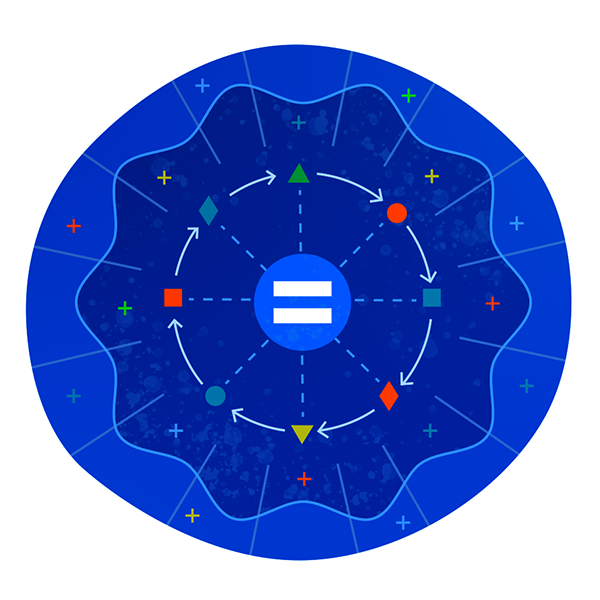An Overview of Corporate Diversity, Equity & Inclusion
Posted on February 10, 2022 by Janis Arrojado – G&A Institute Analyst-Intern
#Uncategorized
By Janis Arrojado – G&A Institute Analyst-Intern
Diversity, equity, and inclusion (DEI) initiatives are integral to creating a positive working environment. Diversity refers to increasing representation from marginalized groups, while equity means ensuring all individuals have what they need to succeed, and inclusion is creating an environment where different people and perspectives are valued and integrated into an organization.
Companies benefit from DEI efforts, and it has been found that companies in the top quartile for racial and ethnic diversity are 35% more likely to have financial returns higher than their competitors.
Companies incorporating DEI into their actions align with the United Nation’s Sustainable Development Goals (SDGs) — specifically SDG 5 (Gender Equality), SDG 8 (Decent Work and Economic Growth), and SDG 10 (Reduced Inequalities).
Representation and inclusion are important for underrepresented identities, and it is important to understand barriers in the workforce for different communities. Companies seeking inclusion should consider obstacles in place for various identities:
- Ethnicity/Race – Many companies struggle with racial and ethnic discrimination, with US $74.8 million collected from employers in the U.S. in 2020 due to racial discrimination violations. As company leaders in the U.S. are overwhelmingly white, long-standing company culture, norms, and policies can cause isolation, microaggressions, job dissatisfaction, and a lack of support for members of underrepresented races and ethnicities.
- Gender – In the workforce, women continue to be underrepresented in every level of career progression. As organizations endeavor to have more gender representation throughout, it is important to recognize the barriers that women face in the workplace. Women often face discrimination in hiring, bias in performance evaluation criteria, and prejudice in navigating professional settings, and women of color in particular are more likely to experience these issues.
- LGBTQ+ – The LGBTQ+ acronym encompasses members of the lesbian, gay, bisexual, transgender, and queer community. Although many consumer brands have publicly supported the LGBTQ+ community and have partnered with LGBTQ+ pride events, there is still a long way to go. Only four CEOs who are openly LBGTQ+ lead America’s top corporations, with only one who is female. In the workforce, people with LGBTQ+ identities face issues with sexual harassment, isolation, inappropriate comments, and career progression.
- Age – Age is often left out of DEI efforts, with more than half of 6,000 global employers answering in an AARP survey that they do not have a specific DEI policy for age. Age discrimination can be for people considered “too young” or “too old” for a role. For older members of the workforce, harmful stereotypes about older workers not being skilled with technology and being closed off to change lead to an age bias.
- People with Disabilities – Research has shown that one in four Americans have some type of disability, which can be visible or invisible. To truly create a diverse and inclusive company, corporations need to focus on employing and providing support to people with disabilities. People with disabilities are severely under-employed and are twice as likely to be unemployed than people without disabilities. People with disabilities have many barriers in the workforce, including lack of accommodation, hiring discrimination, and exclusion.
Looking Forward
It is becoming increasingly important that corporations reflect the diversity of the population of America. Having DEI initiatives is a start to creating an equitable environment for underrepresented identities.
Author
 Janis Arrojado is a senior at the University of North Carolina at Chapel Hill, studying Environmental Science and Geography. Her interests include corporate sustainability, environmental justice, and sustainable development. She currently is an analyst-intern at G&A Institute.
Janis Arrojado is a senior at the University of North Carolina at Chapel Hill, studying Environmental Science and Geography. Her interests include corporate sustainability, environmental justice, and sustainable development. She currently is an analyst-intern at G&A Institute.
Sources / References for More Information
- https://www.mckinsey.com/featured-insights/diversity-and-inclusion/how-the-lgbtq-plus-community-fares-in-the-workplace
- https://www.aarp.org/work/employers/info-2021/age-diversity-inclusion-guide.html
- https://www.psychologytoday.com/us/blog/boomers-30/202011/why-is-age-not-part-diversity-and-inclusion
- https://www.fluxtrends.com/age-in-the-workplace-the-next-frontier-of-diversity-and-inclusion/
- https://www.understood.org/articles/en/disability-inclusion-at-work
- https://www.betterup.com/blog/disability-inclusion
- https://www.accenture.com/_acnmedia/pdf-89/accenture-disability-inclusion-research-report.pdf
- https://www.mckinsey.com/~/media/McKinsey/Featured%20Insights/Gender%20Equality/Women%20in%20the%20Workplace%202019/Women-in-the-workplace-2019.ashx
- https://www.peoplescout.com/insights/racial-ethnic-diversity-in-workplace/
- https://www.greatplacetowork.com/resources/blog/why-is-diversity-inclusion-in-the-workplace-important
- https://www.mckinsey.com/featured-insights/diversity-and-inclusion/diversity-wins-how-inclusion-matters
- https://sdgresources.relx.com/
- https://www.mckinsey.com/business-functions/people-and-organizational-performance/our-insights/why-diversity-matters
- https://www.eeoc.gov/statistics/race-based-charges-charges-filed-eeoc-fy-1997-fy-2020


